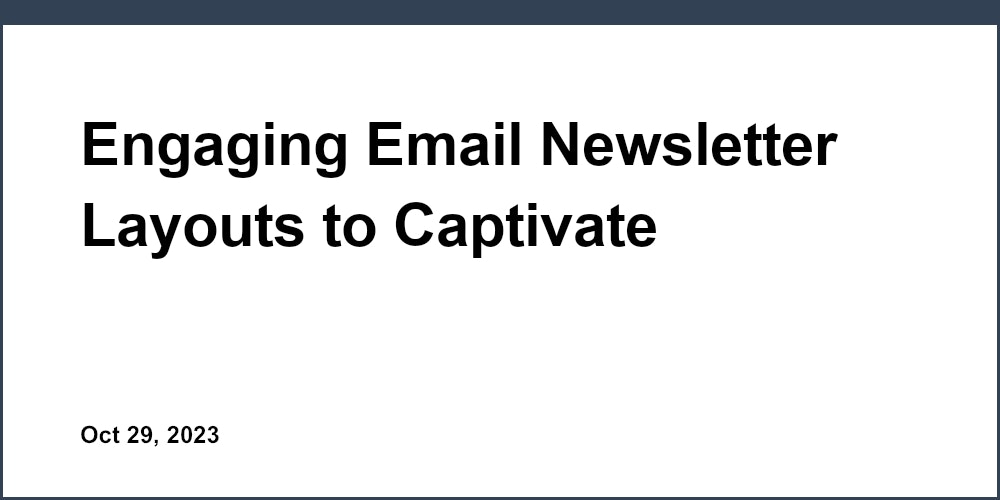Email marketing is essential for modern businesses, but managing campaigns manually can be extremely time-consuming. This is where email automation software comes in handy. This article explores how features like workflows, segmentation, and A/B testing make email automation platforms invaluable for streamlining marketing efforts.
The Problem with Manual Email Marketing
Many marketers still rely on manually drafting, personalizing, and sending emails. This takes up valuable time that could be better spent on strategy and creativity. Additionally, important tasks like onboarding sequences and re-engagement emails often fall through the cracks when managed manually. Mistakes are also more likely without automated quality checks. Clearly, there is a need for a better approach.
Benefits of Email Automation Software
Email automation provides numerous advantages that save time and enhance results:
- Automates repetitive tasks like welcome emails, cart abandonment reminders, etc. Marketers can reallocate time previously spent on manual emails.
- Advanced segmentation options allow personalized messaging to targeted groups based on behaviors, demographics, and other attributes.
- Workflows and triggers enable timely, relevant messaging that nurtures subscribers and boosts engagement. For example, an ecommerce store could send a series of post-purchase emails with tips for using the product.
- A/B testing capabilities allow systematic testing of email content and characteristics to determine the optimal approach. Variables like subject lines, content, timing, and design can be compared to improve open and clickthrough rates.
- Detailed analytics give insight into email performance. Metrics help identify successes to replicate and areas needing improvement.
The Power of Workflows
Workflows deserve special attention as a core capability of automation platforms. They allow configuring multi-step campaigns that execute automatically once defined. For instance, an onboarding workflow can drip relevant content over the first two weeks to educate new subscribers. Transactional workflows can send confirmations, shipping updates, and reviews requests as customers progress through purchases. Re-engagement flows can win back inactive subscribers with customized content. The possibilities are endless.
Smarter Segmentation and Personalization
Robust segmentation empowers personalized communication tailored to subscribers' needs. Basic groups like new vs existing users are a starting point. More advanced options segment by interests, purchase history, page views, etc. Integrating CRM data adds further customization ability based on each contact's profile. The result is relevant content delivered to the right groups, avoiding spam fatigue from blanket messaging. Early adopters, power users, loyal customers, and other niche groups can all be catered to with targeted offers.
Optimization Through Testing
A/B testing provides data to guide continuous optimization. Subject lines, content, and design elements can be systematically tested to determine the best performers. For example, emotional appeals may elicit more opens from one group, while informational subject lines work better for another. Testing allows adapting to changing subscriber preferences over time. Rather than guessing, A/B testing takes the guesswork out of email optimization.
Top Platforms for Automated Email Marketing
Many excellent platforms exist, with varying strengths:
- Mailchimp - Intuitive for beginners, with lots of templates and integrations.
- Drip - Sophisticated segmentation and workflows for advanced automation.
- Ontraport - Ideal for complex sales and CRM scenarios.
- ActiveCampaign - Combines robust email services with built-in CRM.
- Klaviyo - Specialized ecommerce features like abandoned cart recovery.
- GetResponse - Affordable for small businesses but still packed with features.
Tips for Email Automation Success
Here are some recommendations for maximizing results:
- Set up onboarding workflows to nurture new subscribers by sending a series of emails over their first week or two. Provide valuable content tailored to their interests.
- Segment your list based on attributes like demographics, interests, and purchase history. Send content that resonates with each group.
- Test emails relentlessly - subject lines, content, timing, design, etc. Identify the optimal approach through data.
- Monitor campaign analytics to continuously refine and optimize performance. Duplicate successes and eliminate underperformers.
- Automate repetitive tasks through workflows. Focus strategic efforts on creating great content.
Conclusion
Email automation delivers transformative capabilities that streamline execution and boost results. Workflows, segmentation, and A/B testing combine to drive more value from email efforts. Marketing teams can reallocate time spent on manual tasks towards high-impact strategy and creativity.


